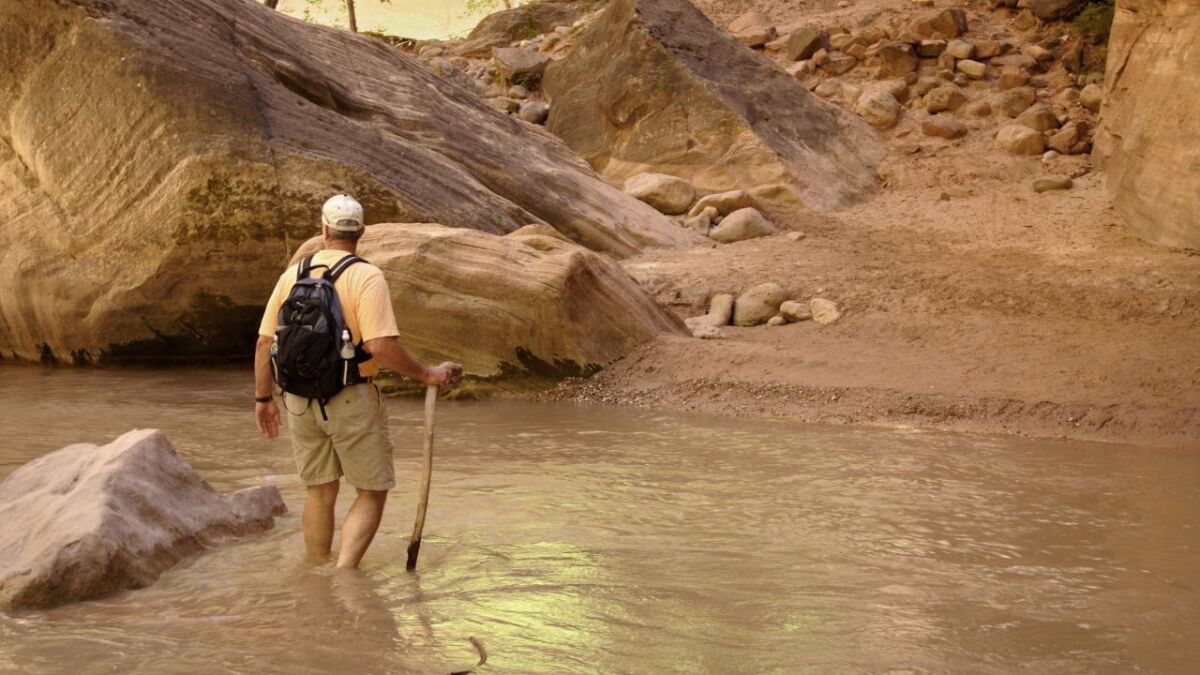
With these tips you safely cross a river
👉 The key facts from this guide
- First, look for natural bridges such as beaver dams, rocks, or fallen tree trunks to cross a river.
- If there is no bridge available, observe the river to determine the risk of flooding, the condition, and the widest point.
- Use a dry bag to protect important equipment from moisture.
- Check the water depth and current strength before crossing the river.
- Use a sturdy stick for additional support and to feel the way ahead.
- When crossing the river, position yourself upstream and move diagonally downstream.
Rivers shape landscapes and often offer breathtaking views. Whether they flow gently or rush wildly, both have their charm.
But what if you have to cross the river with your luggage?
Even a small stream or river can challenge you.
There are some risks you need to know to act with foresight.
Today, you'll learn what you need to consider and which tips will help you cross a river (without too much risk).
Find the right spot
Before you wade through open water, you should first look for a bridge or something similar.
Beaver dams, rocks or fallen tree trunks can be useful to you here.
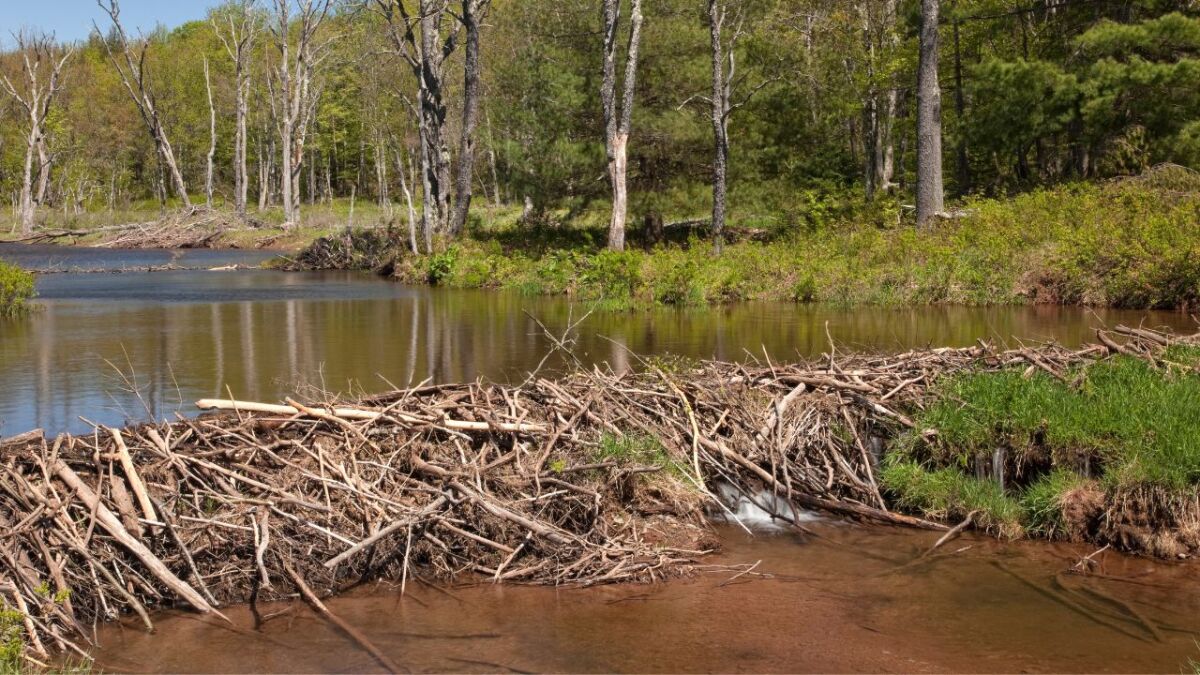
Just make sure that the natural bridges are also stable.
If the beaver dam is already broken in one place, chances are it will break again when your weight is on it.
Furthermore, rocks are not necessarily the ideal path. There is a high risk of slipping and getting injured. Therefore, rely on square stones with more texture rather than flat stones. Flat stones are often slippery and do not provide grip for your shoes.
What to do when there is no bridge in sight?
If there is no way to cross the river dry, you will have to go into the cold water.
You should take some time to walk along the river and observe it.
Pay attention to the following points:
- Flood risk: If it has just rained a lot, there is likely to be a flood. The river is much deeper and the current is usually stronger. This will flatten out a few hours after the rain, and you should definitely take this time before crossing the river.
- Condition: You can't necessarily rely on maps, either. The condition of the river changes over time, and the marked crossing points may no longer be up-to-date. Therefore, take your time to assess the situation correctly. The safest point is always a straight stretch of a river. If you imagine the river bends like the letter "S", then the middle of the "S" is the ideal point to cross. If you lose your footing here, the current should sweep you to the outer bank of the river.
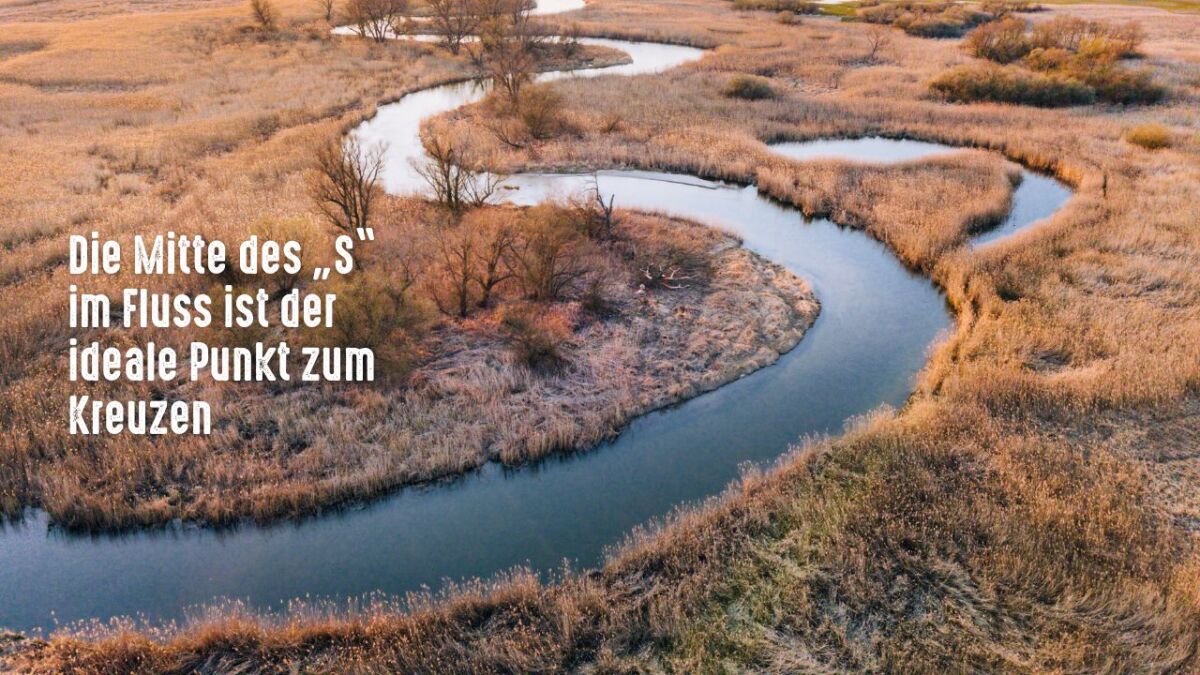
- Widest point: Look for the widest point or where the water divides into several channels. The redistribution of water typically creates shallower areas and the water flows more slowly. Don't make the mistake of choosing the narrowest point of the river. The path may be shorter, but the water flows much faster here. Therefore, take your time to cross and don't try to do it quickly.
- Islands: In addition, you can look for river banks and smaller islands in the water. There, the current breaks and offers you protection.
Once you have found an ideal spot, walk along the river in both directions. This way, you know what dangers lurk behind and in front of you.
Never decide a crossing shortly before a waterfall or rapids! Look for a rescue plan that can free you from the current in an emergency.
But remember: no river crossing is worth dying for. If it doesn't feel right, if the current is too strong or the water is too deep, turn back and seek an alternative.
It's time to get down to business: follow these steps
1. Dry Bag
First, you have already taken the first step by reading this article to prepare yourself for an upcoming situation. The second step is to get yourself a "Dry Bag" so that you can store all essential equipment in it.
Sleeping bag, phone, and fire starter must be protected from moisture. If you decide to go for a swim, you can warm yourself up later and dry your wet clothes.
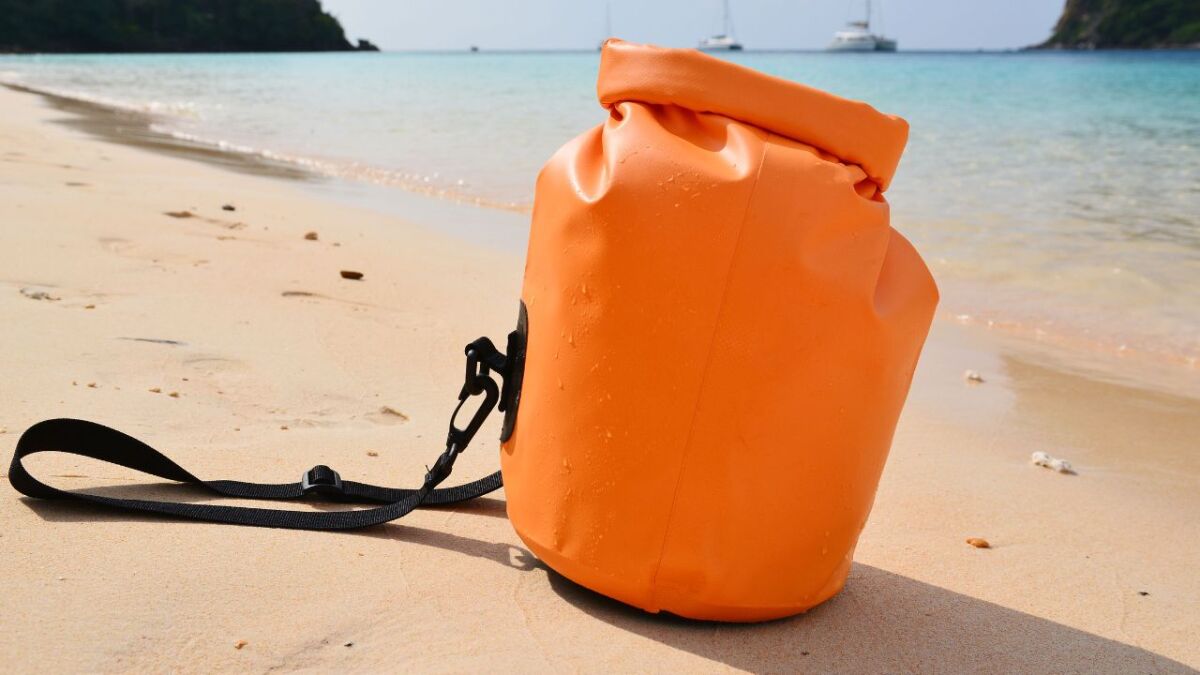
2. Check the water depth
Next, it is important to determine the characteristics of the water. You can orient yourself by looking at stones in the water or holding a long stick in the water to determine the depth.
You should stand in the water up to your knees at most. This may not always be possible, but it should be roughly adhered to. Make sure to also include smaller members of your group in this calculation.
Deeper water can also be considered if there is little to no current.
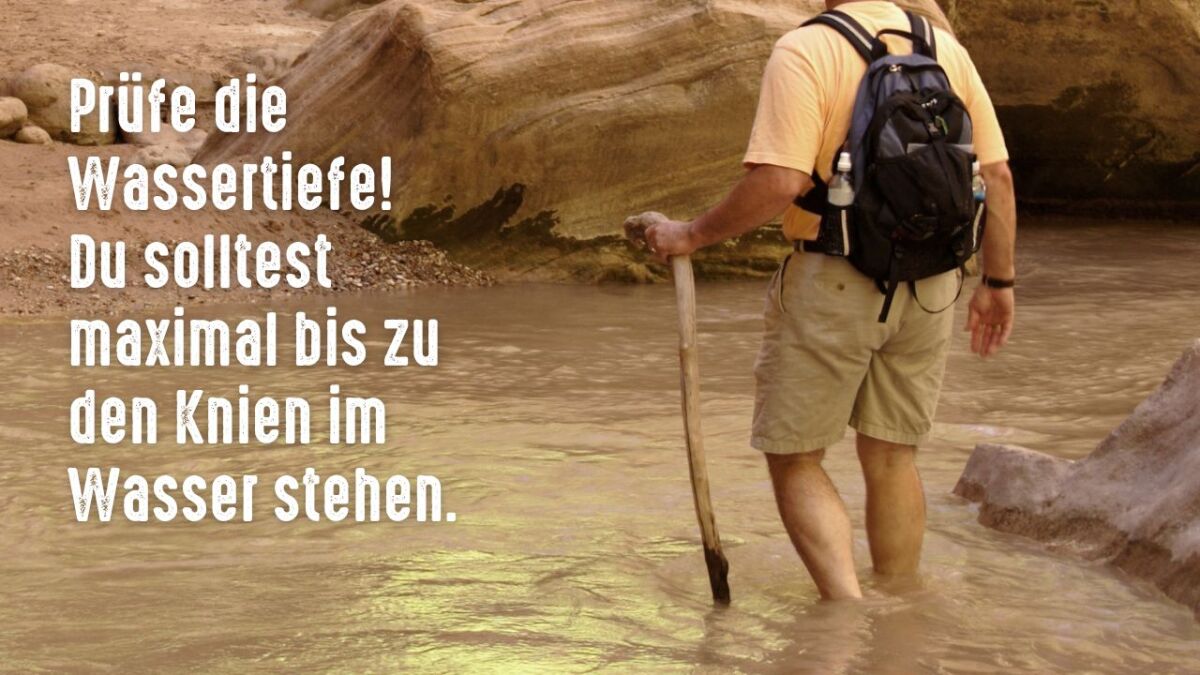
3. Strength of the current
To determine the strength of the current, you can throw a stick into the water upstream and follow it. If the stick is moving faster than you can comfortably run, the current is likely too strong.
Standing waves also indicate an uneven bottom or other obstacles underwater. Be aware of this and keep it in mind when crossing.
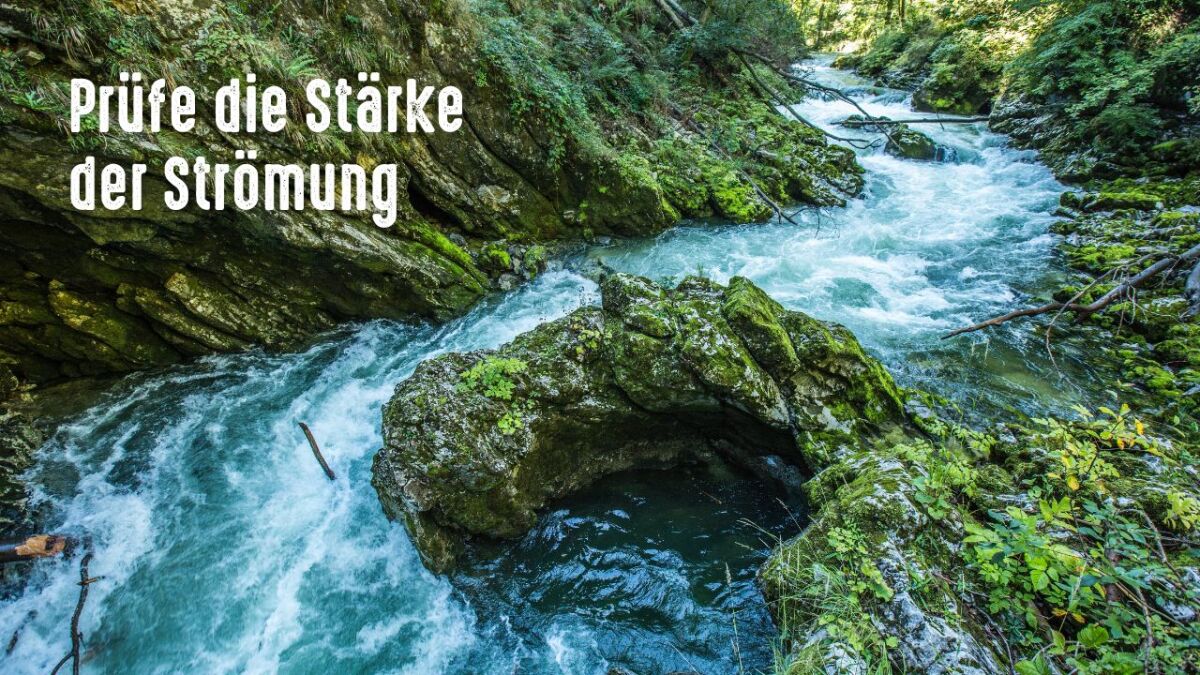
Crossing the river - it gets wet and serious
Shoes on or off? In the end, you have to decide what makes you more comfortable and whether you can dry your shoes afterward.
There is a risk of injury because you never know exactly what the ground is like. Therefore, I would tend to leave the shoes on.
The most important thing is to be sure-footed, whether barefoot or with shoes. Flip-flops are therefore not an option!
If you are not wearing shorts, I would definitely take off your pants and store them in your backpack.
Once you have made your clothing choices, you want to find a sturdy stick that will give you additional support. You can also use it to feel your way ahead and identify potential risks.
Before you start, you should loosen the hip belt of your backpack. In an emergency, you want to get rid of it quickly, as it can become a deadly hazard when filled with water. You might lose your backpack, but if it pulls you down, that won't matter.
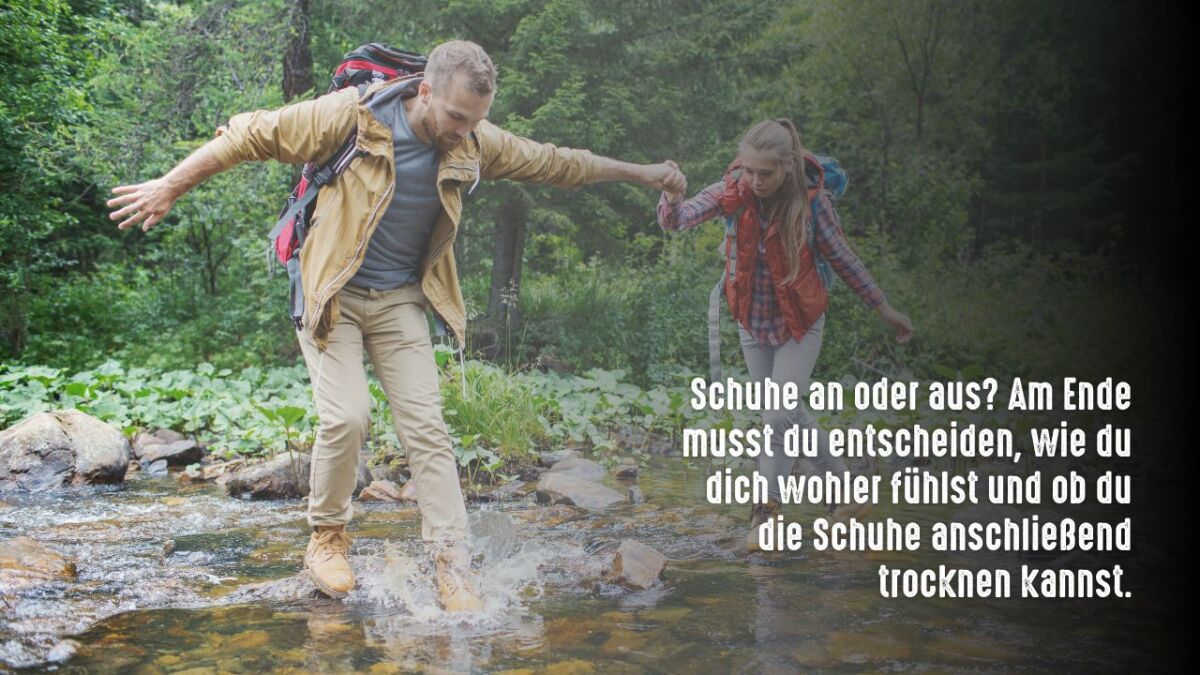
How to move through the river
In the water, position yourself facing upstream and lean slightly into the current. Now move diagonally towards downstream.
You should always keep at least two contact points with the ground. Either foot and stick, or even both feet and the stick. Lift your feet only minimally to ensure optimal grip.
Keep your eyes on the shore. Similar to heights, you should not look down, as the flowing water can be just as dizzying as looking into the depths.
If you are in a group, you can venture through the cool water together. You should hook arms and have the strongest person lead the way. The leading person positions themselves slightly upstream to break the water for everyone else and pave the way.
Finally, always keep the option open to turn back. Never insist too much on a chosen route, but recognize a too high risk early enough and turn back!
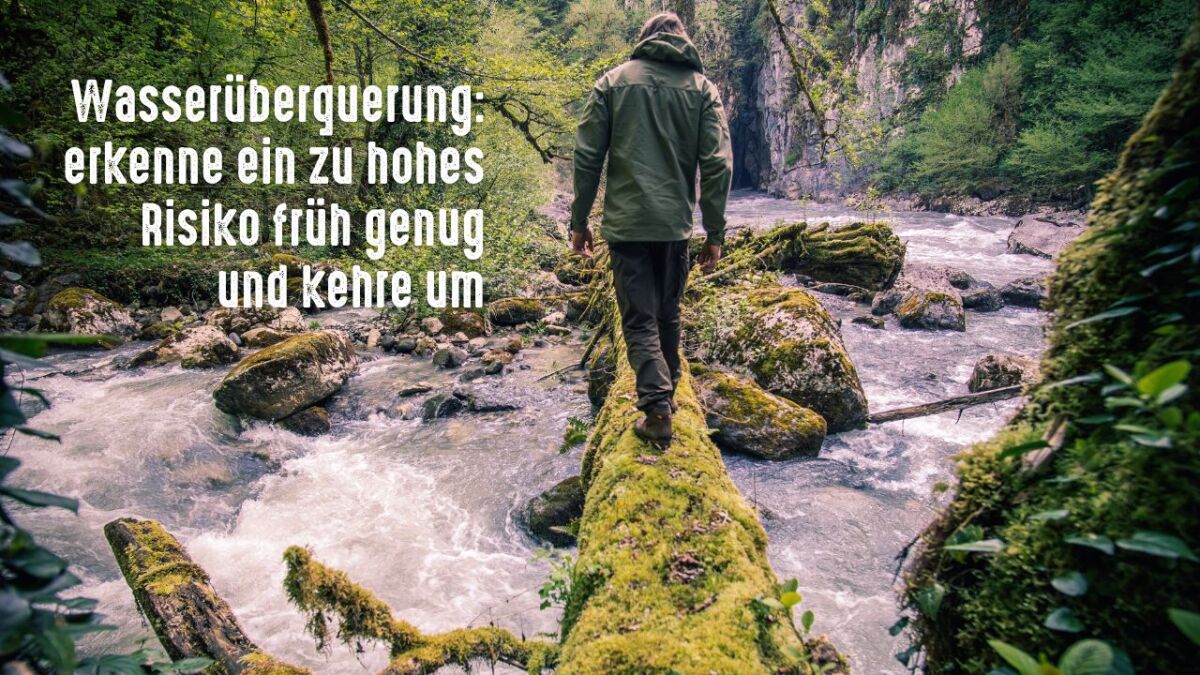
Summary
Crossing a river is an exciting undertaking. It can boost your self-confidence and is also beneficial for group cohesion.
However, crossing a river should not be underestimated, as an overzealous action can pose some dangers.
If you study the river long enough, weigh your options carefully, and remain vigilant during the crossing, you can minimize the risks and have a good chance of continuing your adventure unharmed.


Author of the guide
Martin Gebhardt
Hey, I'm Martin. On my blog, you will learn the basics and numerous details about living in the wild. I think survival, bushcraft and the good life in nature are the keys to happiness. Find me here on Instagram or on YouTube. You can find more about my mission on the About Me page.
Was this guide helpful?
8 people found this guide helpful.
5.00 out of 5 points (8 Ratings)
Comments (0)
This post may contain affiliate links. So if you click on the links and make a purchase, I will receive a small commission at no additional cost to you. Click here, to learn more about it.


